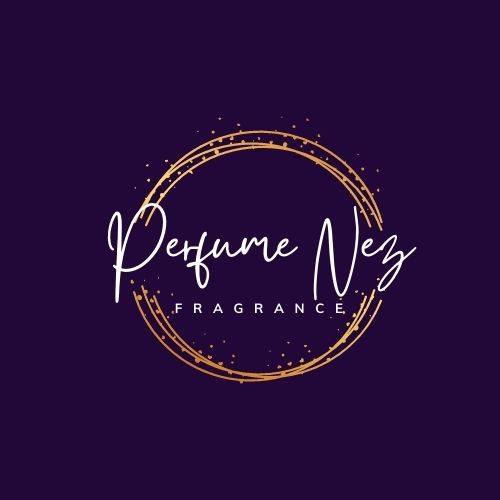How to Tell If Eau Sauvage Has Gone Bad?
Click For Affordable Inspired Perfume Alternatives
Perfumes are an essential part of personal grooming and self-expression, often holding sentimental value or representing a signature scent. Eau Sauvage, a classic fragrance by Dior, is renowned for its fresh, citrusy, and sophisticated aroma that has captivated fragrance enthusiasts for decades. However, like all scented products, Eau Sauvage is susceptible to deterioration over time due to exposure to environmental factors, improper storage, or natural aging. Recognizing when your Eau Sauvage has gone bad is crucial to ensure you enjoy its original scent and avoid unpleasant surprises. In this article, we will explore how to tell if Eau Sauvage has gone bad, what causes its deterioration, and tips for proper storage to extend its lifespan.
How to Tell If Eau Sauvage Has Gone Bad?
Understanding the Shelf Life of Eau Sauvage
Before diving into signs of spoilage, it’s important to understand the typical shelf life of Eau Sauvage. Generally, fragrances can last between 3 to 5 years if stored properly. However, factors like exposure to heat, light, and air can significantly shorten this period. Eau Sauvage, being a high-quality product, may last longer if stored correctly, but it still has a finite lifespan.
Knowing the expected duration helps you monitor your bottle and recognize early signs of spoilage. Always check the manufacturing date if available, and keep track of how long you've had the fragrance.
Signs That Eau Sauvage Has Gone Bad
1. Change in Fragrance Scent
- Altered aroma: The most noticeable sign that Eau Sauvage has gone bad is a change in its signature scent. If the fresh citrus and woody notes have faded or been replaced by a sour, musty, or rancid smell, it's a clear indicator that the perfume is no longer good.
- Offensive or unpleasant odor: Sometimes, the fragrance may develop an unusual smell that is distinctly different from its original aroma, making it unwearable.
2. Change in Appearance
- Color shift: If the liquid has darkened significantly or turned cloudy, it suggests oxidation or contamination. Eau Sauvage typically has a clear or slightly yellow hue; any change indicates spoilage.
- Sediment or particles: Presence of sediment or particles floating in the perfume can also signify degradation.
3. Texture and Consistency
- Viscosity changes: If the perfume feels thicker or more viscous than usual, or if it separates into layers, it may be spoiled.
- Clumping or crystallization: Unusual clumping or crystallization in the bottle can indicate chemical changes.
4. Changes in Packaging
- Leaking or damaged packaging: Damage to the bottle or cap can lead to exposure to air and contaminants, accelerating spoilage.
- Broken seals or caps: If the seal is broken or the cap doesn’t close tightly, the fragrance may have been compromised.
5. Sensory Testing
Perform a small test by spraying a tiny amount of Eau Sauvage on your wrist or a testing strip. If the scent is off, sour, or unpleasant, it’s best to discard the perfume.
What Causes Eau Sauvage to Go Bad?
Several factors can contribute to the deterioration of Eau Sauvage, including:
- Exposure to Air: Every time you open the bottle, a small amount of air enters, which can oxidize the perfume over time.
- Light Exposure: Ultraviolet (UV) rays break down perfume molecules, leading to scent degradation. Store your fragrance away from direct sunlight.
- Heat: Elevated temperatures accelerate chemical reactions that cause spoilage. Avoid storing Eau Sauvage in hot places like the bathroom or near radiators.
- Contamination: Using unclean hands or applying the perfume with unsterilized applicators can introduce bacteria or mold.
- Time: Even in ideal conditions, fragrances naturally age and eventually lose their original character.
How to Properly Store Eau Sauvage to Extend Its Lifespan
Proper storage is key to maintaining the quality and longevity of Eau Sauvage. Here are some tips:
- Keep in a cool, dark place: Store your perfume in a drawer, closet, or cabinet away from direct sunlight and heat sources.
- Avoid temperature fluctuations: Consistent temperatures help prevent chemical changes. Ideal storage temperature is between 15-20°C (59-68°F).
- Keep the bottle upright: Store the bottle upright to minimize exposure to air and prevent leakage.
- Use original packaging: Keep the perfume in its original box to shield it from light and environmental factors.
- Limit exposure to air: Close the cap tightly after each use to reduce oxidation.
- Clean applicators: Use clean hands or tools to apply perfume to prevent contamination.
Conclusion: Ensuring Your Eau Sauvage Remains Fresh
Recognizing when Eau Sauvage has gone bad is essential to preserve its luxurious scent and enjoy a true olfactory experience. Pay attention to changes in aroma, appearance, texture, and packaging, and be mindful of how you store your fragrance. Proper storage not only prolongs the life of Eau Sauvage but also ensures that each spray delivers the signature freshness and elegance you love. If you notice any signs of spoilage, it's best to replace the bottle to enjoy your fragrance at its best. With the right care, your Eau Sauvage can remain a timeless accessory in your collection for years to come.
Buy Perfumes - Best Online Retailers
Click For Affordable Inspired Perfume Alternatives
Click For The Best Niche Perfumes & Decants
Pheromone Perfumes - Confidence, Attraction & Appeal - Click For More
Home Fragrances & Candle Warmers - Click To Scent Up Your Spaces Today!
